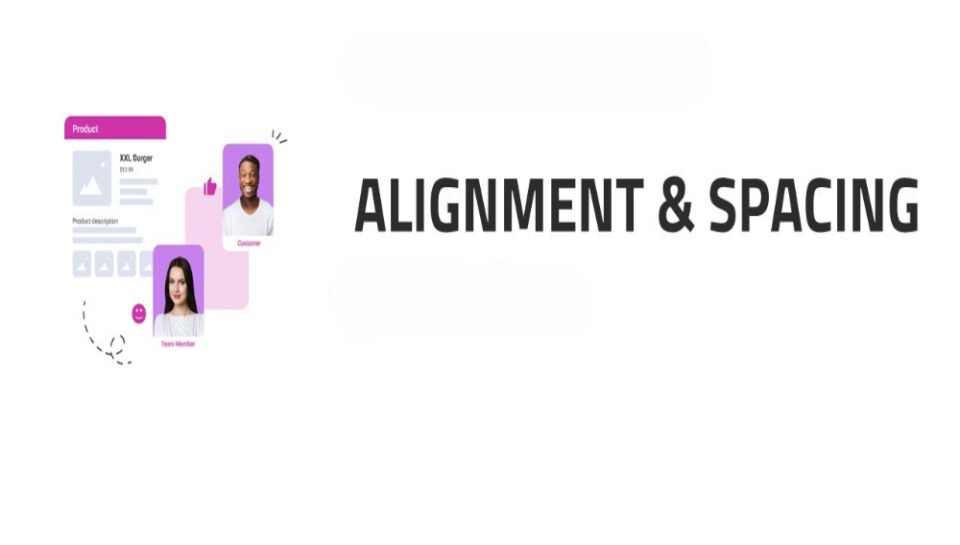
Define the role of alignment and spacing in letterhead design.
INTRODUCTION
In the world of professional branding, letterhead design plays a crucial role in conveying a company’s identity, credibility, and attention to detail. Among the many elements that influence effective letterhead design, alignment and spacing are two of the most foundational and yet often overlooked components. These design principles ensure visual harmony, readability, and a polished appearance, enabling the content to communicate clearly and professionally. This article delves deep into the significance of alignment and spacing in letterhead design, exploring how these elements contribute to the overall aesthetics and functionality of business stationery.
IMPORTANCE OF VISUAL HIERARCHY
Alignment and spacing together establish a visual hierarchy in the letterhead, guiding the reader’s eyes smoothly from one element to the next. Whether it’s the company name, logo, contact details, or the body of the letter, consistent alignment helps emphasize what’s most important. Proper spacing ensures that no single element feels cramped or too distant, creating a sense of balance and professional organization.
CREATING A BALANCED COMPOSITION
Good alignment—whether left, center, right, or justified—creates a structured layout that feels intentional and balanced. When elements are randomly placed or inconsistently aligned, the design can appear chaotic. Similarly, strategic use of white space through spacing gives breathing room to each element, preventing visual clutter and making the document easier to digest.
ENHANCING READABILITY
One of the most practical reasons for focusing on alignment and spacing is to enhance the readability of the letterhead content. Consistent left alignment for text ensures that readers can follow lines naturally, while appropriate line spacing prevents words from overlapping or becoming illegible. Spacing between sections—such as the header, body, and footer—helps readers quickly differentiate between types of information.
REFLECTING BRAND PROFESSIONALISM
Inconsistent spacing or misaligned elements can make even the most well-written communication look unprofessional. Clean alignment and proportional spacing signal attention to detail and reinforce the company’s image as organized and trustworthy. A letterhead with precision in alignment and spacing reflects the brand’s commitment to excellence.
MAINTAINING DESIGN CONSISTENCY
Letterheads are part of a broader brand identity system, which often includes business cards, brochures, and websites. Uniform alignment and spacing across all elements help maintain design consistency, which is crucial for brand recognition. Designers often use a grid system to ensure these aspects stay consistent throughout various branding materials.
IMPACT ON PRINT AND DIGITAL FORMATS
Whether printed or used digitally, the alignment and spacing of a letterhead affect its legibility and aesthetic appeal. Print formats demand precision to avoid misalignment during cutting or folding, while digital formats require scalable spacing and responsive design to maintain clarity across devices. In both cases, careful planning of alignment and spacing is essential.
USING WHITE SPACE STRATEGICALLY
White space, or negative space, is a product of intentional spacing. It helps isolate key information such as logos or headings and adds elegance to the layout. Strategic use of white space through thoughtful spacing ensures that the letterhead does not appear overloaded, making communication appear more open and inviting.
TECHNICAL ALIGNMENT TOOLS AND GUIDES
Design software like Adobe Illustrator or InDesign provides grid systems, rulers, and alignment tools that assist in maintaining accuracy in positioning. Leveraging these tools helps designers ensure that all text and design elements follow a consistent visual path, reducing the risk of manual alignment errors.
IMPACT ON READER PERCEPTION
Ultimately, alignment and spacing play a psychological role in how a letterhead is perceived. Clean and precise layouts evoke feelings of order, clarity, and professionalism. Poor alignment or inconsistent spacing can distract readers and diminish trust, regardless of the quality of the message.
HASHTAGS
#LetterheadDesign #DesignPrinciples #AlignmentMatters #SpacingInDesign #VisualHierarchy #ProfessionalBranding #TypographyDesign #DesignConsistency #WhiteSpaceUse #PrintDesignTips #DigitalLetterhead #BusinessStationery #GraphicDesignBasics #BrandIdentityDesign #LayoutBalance #CorporateCommunication #DesignGridSystem #BrandPerception #CreativeStationery #ReadabilityMatters #DesignWithPurpose #ModernLetterhead #TypographyAlignment #SpacingStrategy #CleanDesign





